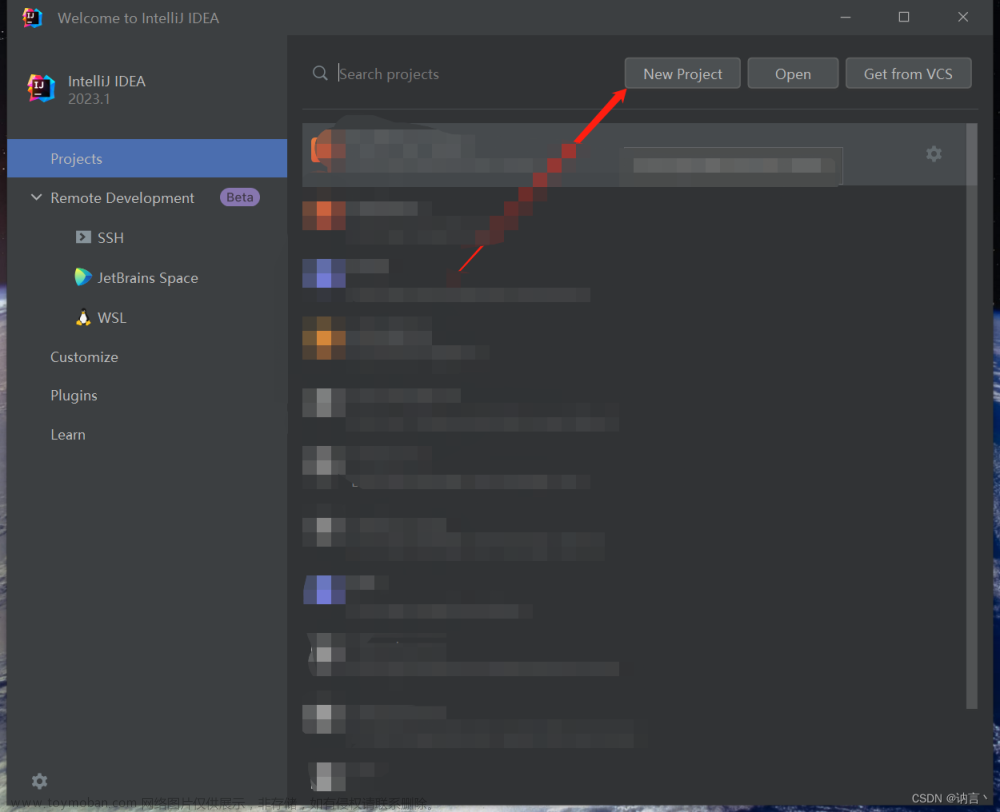前端:Vue3
创建项目:
npm create vue@latest
> cd <your-project-name>
> npm install
> npm run dev
项目结构图如下:

1、查看入口文件内容:main.js
代码如下:
import './assets/main.css'
import { createApp } from 'vue'
import App from './App.vue'
import router from '@/router'
//import axios from 'axios'
// console.log(App)
const app = createApp(App)
//app.config.globalProperties.$axios = axios
app.use(router)
// app.use(axios)
app.mount('#app')在main.js中,首先引入了Vue组件和APP根组件
2、APP跟组件代码如下:
<template>
<div id="app">
<!-- App跟组件 -->
<router-view></router-view>
</div>
</template>
<script setup>
name: 'app'
</script>
<style scoped>
</style>
3、路由文件配置:router/index.js
代码如下:
import { createRouter,createWebHistory } from 'vue-router'
import Login from '../components/Login.vue' //引用Login组件
const routes = [
{path: '/',redirect: '/login'},
{path: '/login',component: Login}, //定义访问页面的路由地址
]
const router = createRouter({
history:createWebHistory(),
routes,
})
export default router
4、Axios请求公共方法:utils/axios.js
代码如下:
import axios from 'axios'
//创建axios实例
const axiosInstance = axios.create({
//api的BaseUrl
baseURL : '/aa',
setTimeout: 5000, //设置超时时间
responseType: 'json',
withDefaults : true, //是否允许带cookie这些
headers: {
'Content-Type' : 'application/json;charset=utf-8',
'x-token' : '777'
}
});
export default axiosInstance
5、测试消息页面:components/Login.vue
代码如下:
<template>
<header>
<img alt="Vue logo" class="logo" src="../assets/logo.svg" width="125" height="125" />
<div class="wrapper">
登录组件:
{{ msg }}
<button onclick="login"> axios</button>
</div>
</header>
</template>
<script>
import axiosInstance from '../utils/Axios'
export default {
data(){
return {
msg : '开始'
}
},
mounted(){
axiosInstance.get('login/login')
.then(response =>{
//处理响应数据
console.log(response.data);
this.msg = response.data;
})
.catch(error =>{
//处理错误消息
console.error(error);
})
}
}
</script>
<!-- 支持less语法格式 scoped代表样式只在本组件中起作用 lang="less" -->
<style scoped>
</style>6、无代理情况向后端发请求会有跨域的问题:
代码如下:
import { fileURLToPath, URL } from 'node:url'
import { defineConfig } from 'vite'
import vue from '@vitejs/plugin-vue'
import path from 'node:path'
// https://vitejs.dev/config/
export default defineConfig({
plugins: [
vue(),
],
resolve: {
alias: {
'@': fileURLToPath(new URL('./src', import.meta.url))
}
},
server: {
proxy: {
//需要代理的路径
'/aa': {
//目标服务器的地址
target: 'http://localhost:9100/',
//是否要将请求中的路径重写
rewrite: path => path.replace(/^\/api/,''),
//是否要改变代理的源地址
changeOrigin: true,
//其他可选的代理配置
}
}
}
})
后端代码:
引入的jar包:文章来源:https://www.toymoban.com/news/detail-682688.html
<dependency>
<groupId>org.springframework.boot</groupId>
<artifactId>spring-boot-starter</artifactId>
</dependency>
<dependency>
<groupId>org.springframework.boot</groupId>
<artifactId>spring-boot-starter-test</artifactId>
<scope>test</scope>
</dependency>
<dependency>
<groupId>org.springframework.boot</groupId>
<artifactId>spring-boot-starter-web</artifactId>
</dependency>测试代码:文章来源地址https://www.toymoban.com/news/detail-682688.html
@RestController
@RequestMapping("/login")
public class Login {
@RequestMapping("/login")
public String login(){
return "登录成功";
}
}到了这里,关于SpringBoot +Vue3 简单的前后端交互的文章就介绍完了。如果您还想了解更多内容,请在右上角搜索TOY模板网以前的文章或继续浏览下面的相关文章,希望大家以后多多支持TOY模板网!














